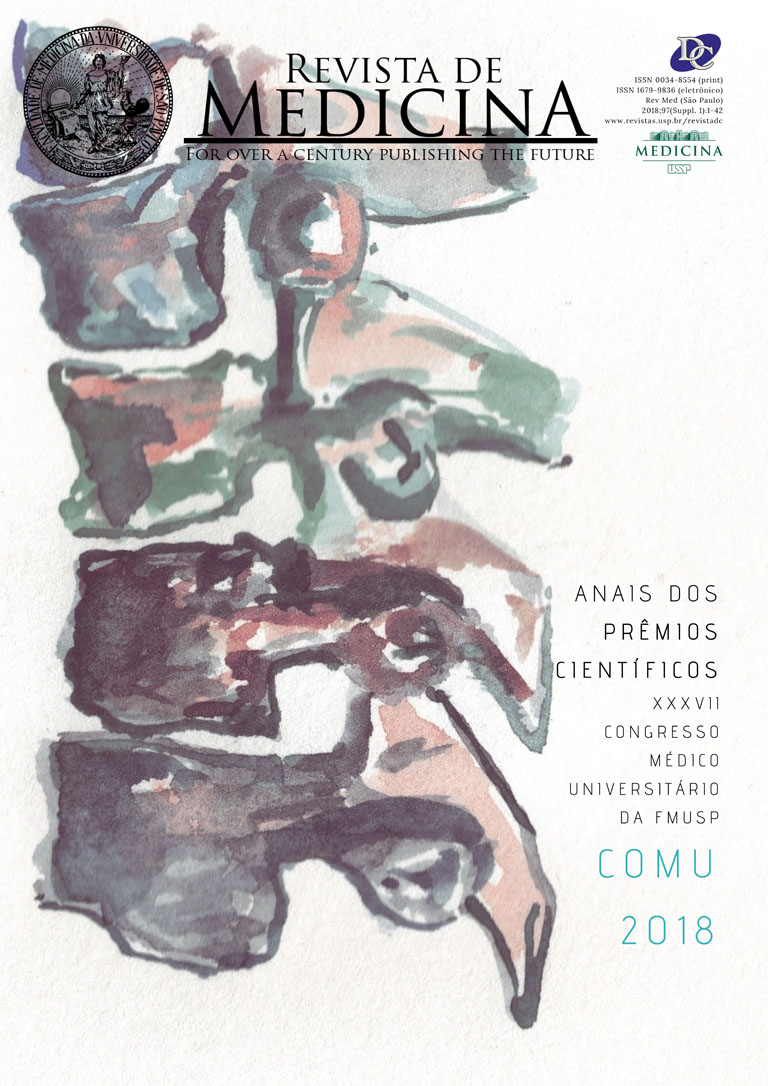Mitochondriogenesis and brain aging
DOI:
https://doi.org/10.11606/issn.1679-9836.v97iSuppl.1p21-22Palavras-chave:
Mitocôndrias, DNA, Encéfalo, Biomarcadores, EnvelhecimentoResumo
Introduction: Mitochondriogenesis is the cellular process responsible for the generation of new mitochondria and consists of the replication of mitochondrial DNA (mtDNA) and the organelle division. Several studies suggest mitochondriogenesis is regulated by oxidative stress through a molecular pathway that involves the peroxisome proliferator-activated receptor gamma coactivator 1-alpha (PGC-1α) and the mitochondrial transcription factors A, B1 and B2 (TFAM, TFB1M, TFB2M). According to the Mitochondrial Theory of Aging, reactive oxygen species (ROS) generated in oxidative phosphorylation damage mitochondrial macromolecules, leading to mitochondrial dysfunction and signaling for cellular senescence. Since oxidative stress plays an important role in both mitochondriogenesis and aging, the amount of mitochondria in a tissue may be a biomarker of senescence and age-related diseases. Objective: The objective of the present study is to analyze the variation of mtDNA content in brain tissue with aging and how the expressions of PGC-1α, TFAM, TFB1M and TFB2M are related to this process. Methods: 60 samples of human brain were collected during autopsy procedures, as well as the clinical history of each donator. Their DNA and RNA were extracted and their mtDNA copy number and expressions of PGC-1α, TFAM, TFB1M and TFB2M were determined through quantitative polymerase chain reaction. The raw data was submitted to statistical analysis. Results: A direct correlation between mtDNA content and age was found among specimens with more than 1000 copies (p = 0,0067). In the population with less than 1000 copies, no correlation was observed. It was also found that the expressions of PGC-1α, TFAM, TFB1M and TFB2M have a good correlation among each other, but none of them correlated to mtDNA copy number or age.
Discussion and conclusion: The amount of mitochondria in brain tissue varies differently with aging among population. While some individuals are prone to increase mitochondriogenesis with aging, others keep it low throughout life. It is possible that these 2 subgroups are under the influence of different factors, apart from the molecular pathway of PGC-1α, TFAM, TFB1M and TFB2M. Interestingly, individuals with propensity to mtDNA content increase also have higher body mass index and higher expression of the studied genes among diabetics. This findings suggest that metabolic disorders, besides being a risk factor for several diseases, may be also related to mitochondriogenesis increase in brain aging. Therefore, the results achieved in the present study reinforce the hypothesis that the mitochondrial content in a tissue may be a biomarker of senescence and age-related diseases.
Downloads
Downloads
Publicado
Edição
Seção
Licença
Copyright (c) 2018 Revista de Medicina (São Paulo)

Este trabalho está licenciado sob uma licença Creative Commons Attribution-ShareAlike 4.0 International License.




